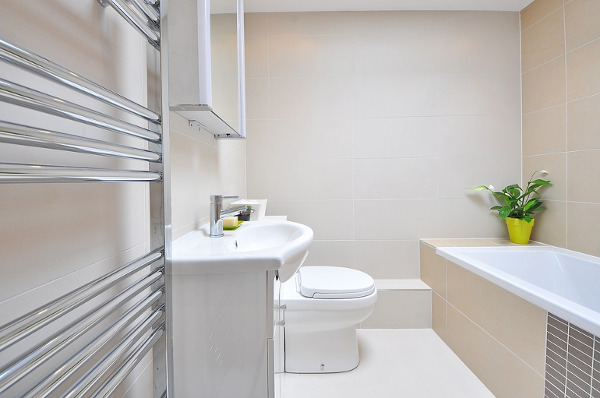
Ever since we, as a species, mastered the art of indoor plumbing, the humble lavatory has morphed from a place people go to do the unmentionable to a quiet refuge from the daily grind. No longer do we have to squat precariously over a hole in the floor or pay a visit to the perpetually cold outhouse, the glory of the porcelain bowl supports us during our best and worst times.
This is why it can be upsetting and slightly guilt-inducing when you are greeted with the sight of a colourfully stained toilet bowl upon lifting the seat. With this guide and a little bit of effort, you won’t have to be faced with such a sight and you won’t have to listen to the shrieks of horror and disgust when guests use your toilet.
Table of Contents
What is limescale?
Limescale (or calcium carbonate) is brought into our homes by water which has previously passed through soft rocks, such as chalk and limestone. As the rainwater travels through these soft rocks it picks up some of the minerals held within. This is how it becomes ‘hard’ water.
Although all tap water in the UK has to pass through multiple filtration systems, the minerals are quite stubborn. As such, the ‘hard’ water travels through our pipes, depositing limescale in our taps and appliances.
You will recognise limescale build-ups as the powdery white substance which appears on taps, shower heads, walls, mirrors, and any other surface within splashing distance of the sink. In the toilet bowl, limescale rears its ugly head as brown/orange/pink streaking stains.
Why limescale must be removed?
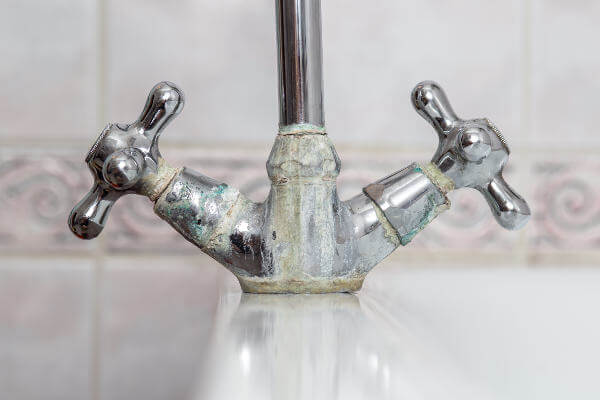
Shutterstock / By Losonsky
The biggest reason people have for removing limescale is that it looks unhygienic and terrible, especially when the toilet bowl is heavily stained. Despite this being important to us, the visual effect is not an issue in the grand scheme of your plumbing. The real danger posed by limescale is, as deposits build up they slowly restrict the flow of water in pipes, taps, shower heads, kitchen appliances such as dishwashers, and your toilet.
A restricted water flow means that your appliances cannot wash clothes and dishes properly, it will be harder to wash, and the toilet may not flush properly. It is easy to see how this could affect the hygiene of your home.
Limescale removal myths
As with most cleaning tasks, there is a multitude of myths surrounding the removal of limescale with home remedies. The two most popular involve using cola and bleach, we decided to test them out so you don’t have to.
- Cola – The myth states pouring a large bottle of cola into the toilet bowl and letting it sit overnight, after removing the water, will remove any limescale deposits. The idea is that the acid in the cola will dissolve any limescale it comes into contact with, our only result was a more cola coloured limescale stain.
- Bleach – Common bleach is a powerful household helper, it can remove tough stains and it kills pretty much everything. It is reasonable to assume that bleach would be particularly useful for removing limescale, however, all it does is lighten the stains. So while your toilet may look clean it is still encrusted with limescale, it’s just harder to see.
How to clean limescale with vinegar
While you can buy a variety of specially designed toilet cleaners to remove the unsightly limescale stains, you can achieve the same result with a bottle or two of white vinegar and some elbow grease. The acidic nature of vinegar is perfect for softening and lifting limescale and it is nowhere near as expensive as a commercial toilet cleaner.
- Pour one litre of undiluted white vinegar directly into the toilet bowl, being sure to pour it around the sides of the bowl.
- Let it sit for three-four hours.
- Scrub the toilet bowl with more white vinegar.
- Flush the toilet to rinse away the stains and residue.
- Repeat until the toilet bowl is clean and sparkling.
How to clean limescale with sandpaper
From time to time you may encounter a toilet with limescale stains so stubborn you consider just replacing the toilet, you tried commercial cleaners and vinegar but neither managed to shift the embarrassing limescale build-up. Don’t smash the toilet in a cleaning rage just yet, there is still another trick to try.
It may not be pleasant or enjoyable, but you can remove limescale with the help of some sandpaper. Every home improvement store will carry a selection of sandpaper of varying grains, from fine to coarse. We recommend buying two types, the first should be a medium grain to remove the majority of the limescale and its stain, the second type should be fine grain to finish removing the limescale.
- Start with the medium sandpaper and gently rub the limescale build-up and stain.
- Rub until the majority has been removed, don’t press too hard though or you may scratch the bowl.
- Next, use the fine grain sandpaper to gently buff the rest of the build-up and stain away.
- Flush the toilet to rinse away the residue.
- Clean the toilet as you normally would.
So there we have it, your guide on how to remove limescale from your toilet. Stick to using commercial products, white vinegar, or sandpaper for the best results or opt for professional cleaning service. With your limescale-free toilet, you can truly feel like royalty when on your throne.
Book a slot with a cleaning expert?
Enter your postcode to view our rates and availability in your area.
For questions about the services we offer visit our main site
Did we miss anything? Do you have any tips for removing limescale? Let us know in the comments below or give us a shout on social media!




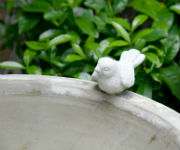
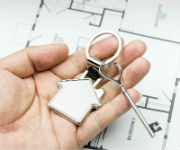

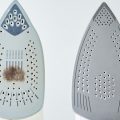

Over the last 20+ years, I’ve managed to clean off the limescale stains left in the bowl by careless previous occupiers and builders, but the toilet is getting very difficult to flush properly. Could limescale be clogging up the U-bend, beyond the reach of the bowl cleaning?
If so, would using much more vinegar at a time – or something stronger – remove the scale deposits and let the toilet drain properly? Or do I have to get the plumber in to disconnect (and later reconnect) the toilet, so that I can clean it out by hand with sandpaper etc?
Hello Diana,
It really depends on how much limescale has been building up there. There are stronger acidic solutions for toilets – and in every case, as you probably know, you’ll have to repeat a few times.
We’d also advise to try with the plumber if a stronger solution doesn’t work.
Regards,
Fantastic Team
Holy cow – I am afraid the large pipe carrying away toilet waste would never be blocked by coatings of limescale ! It sounds like the waste pipe has developed a buildup of waste maybe at a joint or cracked pipe between the house and the sewer. You could start with a toilet snake to see if build up is near to toilet (look on line info on how to use) if that does not clear it then you should call in local city department to check it (if they do not help) then you will need a plumber that handles drain problems – this can be expensive so shop around first. Don’t wait until it is fully blocked and overflowing ! Good Luck.
I live in Puebla, Mexico. I’ve never seen limescale like we have here. It’s called sarro in Spanish. If you don’t drain your water heater every 15 to 30 days it can last as little as 6 months before you above to replace it.
As for the toilet not flushing, I don’t think the. problem is in the u=bend or drain side of the toilet but in the rim where part of the flush develops that swirling. siphon motion that carries the waste down the drain. The holes around the rim get clogged with limescale and the siphon doesn’t work as well as it should. You can see it when you flush, the water only comes out of a few holes. The stains in the bowl show where the water still flows or perhaps where it flowed until those holes were clogged.
The new low volume toilets depend more on a larger hole at the drain and seem to work better. We installed one in our house here and it has yet. to develop those stains in the bowl.
Part of that may be a technology we are trying to deal with the limescale. It is a high lowered magnet installed where the water comes into the house. The force of the magnet changes the chemical composition of the calcium and magnesium magnesium that make of the limescale so they don’t form those sharp crystals that stick to everything. Seems to work but you have to turn down the flow of water from the street for the magnets to have any effect.
The water from the street stopped flowing into the cistern so we had to fill it with a hose from the neighbors. In the month it took for the plumber to come fix it, the plumbing in the house was damaged again, including the hydraulic pump. Plumbing is a special challenge here.
This week I discovered there are a number of electronic devices that do the same as the magnets but can handle up to 60 liters plus. per minute flow. They come with a small computer that creates a pulse through wires you wrap around the intake pipe. The pulse changes the calcium into an ion that forms long smooth crystals with the magnesium that won’t stick to anything. I’m going to try it. Hope this helps.
Great comment, Roger, thanks for pitching in!
Sandpaper on your toilet? Great way to scratch the porcelain.
Use a Pumice stone instead, gets rid of the limescale and doesn’t scratch the toilet.
Hello Briggers, appreciate your input. We always advise testing the cleaning method on a hidden place first to make sure it’s suitable. In this case, the grit of the sandpaper must be fine enough not to damage the porcelain.
And you’re absolutely right about the pumice stone, it does the same job.
Regards,
Fantastic Team
Is there really such a thing as an electronic device that changes the composition of clacium ? I would like to buy it if someone gives me the name of the device and if it really works. Have had calcium problems from day one in our house – we are on a well.
Hello Marion,
Thank you for your interest in the topic!
There is some research on the effects of magnetic field on calcium carbonate which shows that some methods of magnetization can lead to decreased amount of limescale. This however isn’t enough to guarantee that such anti-limescale device will actually make a difference.
If you decide to try one out let us know if it helped.
Regards,
Fantastic Team
why does it have to be white vinegar?
Hello, Penny,
White vinegar is the most acidic one, which makes it a potent cleaner and perfect for removing limescale.
Regards,
Fantastic Team
Hi there
Do we need to empty thr toilet bowl before pouring in the vinegar? And if so, how would you do that?
Thanks!
Hello, Nicole
It’s unnecessary to empty the bowl from water to pour the vinegar in.
Regards,
Fantastic Team
I assume I have to empty the lavatory bowl as best as possible and use rubber gloves with sand paper?
Hi, Christine,
It is unnecessary to empty the bowl to pour the vinegar. But you should definitely use gloves when it comes to cleaning
Regards,
Fantastic Team
Thanks so much for this advice I’m moving to a new home with 2 x bad toilets so will be following your advice .
Had an electric magnet thing for years. Absolutely useless
I live in South London and confess (Embaressed) to letting very unsightly lime build up in my lavatory. I managed to clean it down to some very stubborn lime that just would not go away. I’ve poured about 100 ml vinegar in there and swirled it with brush and left it there for two hours. Now I’ve brushed and my gosh it actually totally worked, all limescale gone, thank you vinegar and fantastic cleaners.
I like to use a lemon half once a week to scrub the bowl. A denture cleaning tablet dropped into the bowl once a fortnight will manage scale and stains below surface.
Vinegar and baking soda is fantastic for the cleaning the toilet. I use the vinegar and baking soda.
I find the best way to clean the lines going off the toilet is by using wet and dry something about 240 grit and just do it nice and easy and you don’t even have to drain the water out to be honest I’m not tried the vinegar message so that is next on the list as a
Ongoing solution.
Yes the electronic devices that wrap around the cold inlet pipe to your house are very effective. Here in the uk, many areas are on chalk so they are pretty standard here. Water softeners also alleviate the problem too, double up and you’ll have no issues.
If you prefer to remove the water in the bowl prior to treating it with vinegar, I’ll tell you what I did. I discovered, accidentally, that plunging the toilet removes most of the water in the bowl without it refilling from the tank. You may have to try a few different angles/positions for the plunger. It doesn’t remove every drop, but what it leaves behind could easily be soaked up.with a rag.
Thank you so much for sharing this amazing article. As a housekeeper, the wonderful solution to remove limescale from the toilet. Thanks admin
Hi,
My plumber accidentally poured areldite epoxy adhesive into the bowl which we did not notice for few days. Now it has got strongly stuck which is not getting removed even with scrubbing. Can you suggest any chemical that we can use here?
Thank you
Personally, I think it will dilute the vinegar and render it less effective if you leave the water in the bowl. You could try scooping it out or use a siphon pump. I have yet to try it.
Thanks for the advice. I am a bit of a clean freak and have just bought a new home in Mayo Ireland and the bottom of my ensuite toilet is coated in limescale. I am going to the shops now to get vinegar to try and remove it. Why the previous owners didn’t stay on top of things and keep it clean baffles me.
I live in Spain and thought the area around Bristol was bad! Nothing like the cal here. We have a well and only drink bottle water. When we moved i one toilet was dreadful. I have used gallons of bleach thinking that would remove it but no, it just looks slightly cleaner for a few days. Tonight i have a whole bottle of white cleaning vinegar in it. Fingers crossed tomorrow a good scrub will remove most of it. Glad to know not to waste more bleach down it especially as it just empties into a huge hole at the bottom of the garden which needs bugs to breakdown the smells etc which bleach kills off!
Hi Roger, do you have a water softener? They’re good for reducing the impact of hard water, but at the rates you’re descibing I assume you would be running it constantly and going through an awful lot of salt.